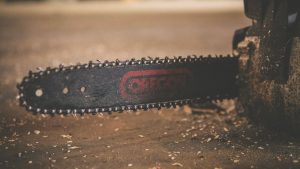
How to Choose a Chainsaw: Tips and Tricks for Every Homeowner
When it comes to tackling yard work, a chainsaw is an essential tool for any homeowner. From cutting firewood to pruning trees, a chainsaw can make quick work of even the toughest jobs. But with so many different models and brands on the market, it can be challenging to choose the right one. To help you make the best decision, we’ve put together this guide on how to choose a chainsaw.
Determine Your Needs
The first step in choosing a chainsaw is to determine your needs. Do you need a chainsaw for light-duty work, such as pruning trees and cutting small limbs, or are you planning to tackle more substantial projects, such as felling large trees or cutting firewood? Knowing the type of work you’ll be doing will help you determine the size and power of the chainsaw you need.
Consider the Size and Weight
The size and weight of the chainsaw are essential factors to consider. If you’re planning to use the chainsaw for an extended period, a lightweight model may be more comfortable to handle. However, if you’re tackling larger jobs, a heavier chainsaw may be more powerful and efficient.
Look for Safety Features
Safety should be a top priority when choosing a chainsaw. Look for models with safety features such as anti-vibration systems, chain brakes, and safety switches. These features can help prevent accidents and injuries while using the chainsaw.
Check the Bar Length
The bar length of a chainsaw refers to the distance between the tip of the bar and the chainsaw’s body. A longer bar length means that the chainsaw can cut through larger logs and trees, but it also means that the chainsaw will be heavier and more challenging to handle.
Consider the Power Source
Chainsaws can be powered by gasoline, electric, or battery. Gasoline-powered chainsaws are more powerful but require more maintenance and produce more emissions. Electric chainsaws are less powerful but are quieter and more environmentally friendly. Battery-powered chainsaws offer the convenience of cordless operation but have limited run time and may not be as powerful as gas or electric models.
Think About Maintenance
Maintaining a chainsaw is essential for keeping it in good working condition. Look for models with features that make maintenance easier, such as tool-less chain adjustments and easy-to-access air filters. Additionally, consider the availability of replacement parts and the cost of maintenance when choosing a chainsaw.
Read Reviews
Before making a purchase, read reviews from other homeowners who have used the chainsaw. Look for models with positive reviews and high ratings. Reading reviews can give you an idea of the chainsaw’s performance, reliability, and ease of use.
Consider the Brand
The brand of the chainsaw can also be an essential factor to consider. Some brands are known for their quality and durability, while others may offer more affordable options. Research different brands and choose one that is reputable and has a good track record.
Look for a Warranty
A warranty can provide peace of mind when purchasing a chainsaw. Look for models with a manufacturer’s warranty, which can protect you from defects or malfunctions. Additionally, consider purchasing an extended warranty for added protection.
Try Before You Buy
Finally, before making a purchase, try out the chainsaw in person. Hold it, adjust the chain, and see how it feels in your hands. A chainsaw that is too heavy or too large for your body may be difficult to handle and could lead to accidents. Testing the chainsaw before you buy it can help you make the best decision.
In conclusion, choosing the right chainsaw can make yard work easier and more efficient. By considering your needs, the size and weight of the chainsaw, safety features, bar length, power source, maintenance requirements, reviews, brand, warranty, and trying the chainsaw before purchasing, you can make an informed decision. Don’t rush into buying the first chainsaw you come across. Take the time to research and compare different models and brands to ensure you find the best chainsaw for your needs.
It’s also essential to remember that owning a chainsaw requires responsibility and care. Always read the manufacturer’s instructions and safety guidelines before using your chainsaw. Wear protective gear, such as eye and ear protection and chainsaw chaps, to prevent injuries. Regularly inspect and maintain your chainsaw to ensure it’s in good working condition.
In summary, choosing the right chainsaw involves considering a variety of factors, including your needs, safety features, bar length, power source, maintenance requirements, reviews, brand, warranty, and trying the chainsaw before purchasing. By following these tips and taking proper care of your chainsaw, you can make yard work safer, easier, and more efficient.













